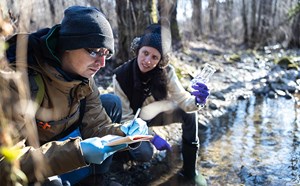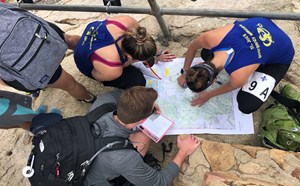
In Case You Missed It – Palliative Care in the Wilderness
Patrick Burns, MD
While on shift, a colleague of mine recently brought up a recent journal article discussing palliative care in austere settings1 which took me a little by surprise. I’ve been practicing wilderness medicine for quite some time and have yet to connect the two fields. Certainly, I’ve been a proponent of appropriate palliation when attending in the emergency department. I’ve also witnessed a rise in popularity of the field reflected in an increase in the number of Hospice and Palliative Care graduate training programs – in fact, 137 of these programs are listed by the ACGME2. After the shift, I was quick to pick up my copy of WEM and find the article.
First, it’s worthwhile to define the field of Palliative Medicine as it is broader than simply end-of-life care. The field in whole is aimed at improving quality of life by limiting suffering. This is applicable to both acute life-threatening illnesses as well as chronic terminal diseases. Preventing and relieving suffering, whether it be physical, psychosocial, or spiritual, can occur in conjunction with life-preserving measures – typically what we are aiming to do with sick patients in the backcountry.
The authors go on to explain situations involving search and rescue (SAR) efforts, humanitarian disasters, and mass casualty events. The concepts of psychological first aid3, explained to me by the venerable Laura McGladrey, are compelling and particularly relevant to SAR. This article explains the connection between palliation and reducing the chronic and persistent symptoms of experiencing a traumatic event. The treatment of not only pain, but the anxiety and suffering that comes with a traumatic life experience such as one in a horrible backcountry accident, can last far beyond the immediate effects of the treatment. Knowing this connection and understanding basic palliation techniques is essential for any austere rescuer. Applications to humanitarian disasters are clearly relevant as limiting the suffering as the result of an unimaginable disaster can help those who have lost so much recover quicker with more resiliency. Lastly, having taught mass casualty incident triaging over the years, we discuss labeling some victims as “black” and the discussion typically ends there with their care. However, this article makes a compelling argument that as long as some limited resources are available, these triaged “black” individuals can benefit greatly from end of life care. The article describes that this can actually take very little resources such as minimal medications, brief moments in time, and even nonmedical people to perform.
I encourage each of you to delve deeper into this article, and incorporate it into your future teachings. I certainly will.
- Woods JD, Woods BN. Palliative Care’s Role in Austere Medicine. Wilderness and Environmental Medicine. 2022; 33(1): 102-8.
- Accreditation Council for Graduate Medical Education (ACGME). Hospice and Palliative Care (multidisciplinary). https://apps.acgme.org/ads/Public/Programs/Search
- Injuries, Recovery and What Comes After. The Sharp End Podcast. Ep 34. https://www.youtube.com/watch?v=5EJMidlz9IU



